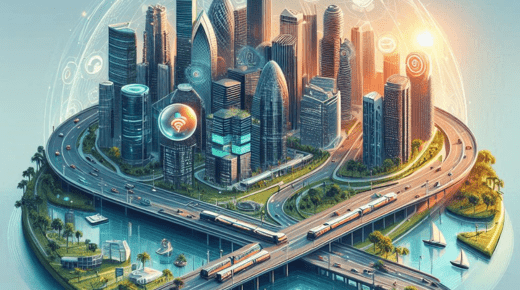The Smart Shift: How QSR Real Estate is Leading Florida’s Tech-Driven Development Wave

Fast food used to be about flavor, price, and speed. Today, it’s about frictionless service, hyper-efficiency, and tech-powered experiences. And it’s not just the menu that’s changing—it’s the land beneath it.
Across Florida, cities like Lakeland and Orlando are seeing a new generation of Quick Service Restaurant (QSR) developments designed not only to serve food—but to serve the future. Touchless tech, AI-enabled drive-thrus, modular kitchens, and sustainability upgrades are changing what these buildings are and how they interact with the communities around them.
But here’s the kicker: this evolution doesn’t begin in the kitchen. It begins in site planning—and the role of real estate developers has never been more pivotal.
From Ordering to Orchestrating: The Rise of Tech-First QSR Spaces
What used to be a simple drive-thru experience is now a carefully engineered micro-environment. QSR locations are evolving into data-responsive, customer-centric venues, designed to process high volumes of mobile orders, real-time queue adjustments, and delivery handoffs.
- In Orlando, where tourism and tech collide, QSR brands are piloting smart automation—from AI order-takers to energy-efficient kitchens.
- In Lakeland, residential growth demands seamless, accessible food options that can scale with expanding neighborhoods.
For both, developers like Lawrence Todd Maxwell are integrating this next-gen thinking into zoning, permitting, infrastructure design, and site layout—long before a menu board is ever installed.
Why Developers Are the Unsung Tech Facilitators
Tech-enhanced QSRs can’t just plug into any location—they need:
- Optimized site flow for delivery drivers, app pickups, and dine-in customers
- Room for future tech integrations like EV chargers or drone landing pads
- Smart utility connections to support advanced refrigeration, air filtration, and solar or battery systems
- Community-conscious planning that accounts for sound, light, and traffic impacts
These requirements mean that Lakeland real estate developers and Orlando real estate developers must act as tech translators, connecting tenant ambitions with city policies and neighborhood realities.
The Human Element in a Digital World
Even as QSR real estate becomes more tech-driven, one thing remains constant: community connection. Fast, consistent service is great—but it’s the role of QSRs as local landmarks that still defines their long-term success.
That’s why modern QSR developments also prioritize:
- Architectural design that blends with local aesthetics
- Green space, pedestrian access, and shaded seating
- Smart signage and visibility that doesn’t overwhelm neighborhoods
- Employment opportunities and public safety enhancements
In this balance of digital innovation and human-centered design, developers serve as the bridge between automation and authenticity.
QSR as a Launchpad for Smarter Urban Futures
QSRs are no longer just destinations—they’re infrastructure anchors. When placed wisely, they activate corners, upgrade traffic signals, improve lighting, and attract co-tenants like healthcare, banks, or wellness brands.
That’s why today’s QSR real estate projects—especially in growth zones like Lakeland and Orlando—are being built with multi-functionality and future scalability in mind. This strategic vision isn’t just about food—it’s about city-building.
Final Thought: From Curbside to Connected Cities
In the Florida of the future, QSR real estate won’t just be about delivering meals—it’ll be about delivering urban innovation. These humble drive-thrus and walk-ups are becoming testing grounds for how technology, design, and land use intersect in real time.
Thanks to the foresight of experienced Lakeland real estate developers and Orlando real estate developers, the QSR spaces of tomorrow are already taking shape—and they’re setting the pace for smarter, faster, and more human cities.
Leave a Reply
You must be logged in to post a comment.



Leave a Comment